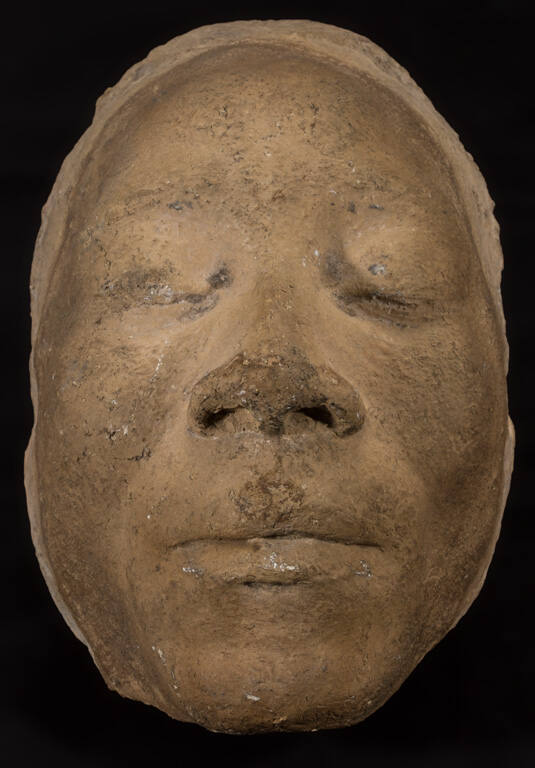
Object Details
Artist
Jason Seley
Medium
Earthenware
Dimensions
8 × 5 × 4 1/8 inches (20.3 × 12.7 × 10.5 cm)
Credit Line
Gift of Clara K. Seley
Object
Number
89.035.001
Hector Hyppolite (1894–1948) is considered the Grand Maître among Haitian painters. Details of hi(…)
Hector Hyppolite (1894–1948) is considered the Grand Maître among Haitian painters. Details of his life are sparse, but Hyppolite was known as a Houngan, or Vodou, priest. At fifty-two, his talents were championed by the novelist Philippe Thoby-Marcelin, who encouraged him to move to the capital, Port-au-Prince.
Hyppolite was introduced to artist Jason Seley at the Centre d’Art in Port-au-Prince, where Seley was teaching sculpture. When Hyppolite died in 1948, it was just as his reputation as an artist was growing. At the request of the Centre d’Art founder DeWitt Peters, Seley made Hyppolite’s death mask. Jason Seley, Class of 1940, began teaching sculpture at Cornell in 1966, becoming chair of the Department of Art (1968–73) and later dean of the College of Architecture, Art and Planning (1980–83).
The Western tradition of casting death masks is often traced back to Pliny’s discussion of wax imagines in the Natural History. Although none survive from antiquity, plaster examples have been found in Roman tombs. Similar to seal impressions, silhouettes, and photographs, their combination of physical contact and representational fidelity gives them a special, uncanny power in contexts of mourning and remembrance.
(Verity J. Platt and David M. Legrand ’23, “Wonder and Wakefulness: The Nature of Pliny the Elder,” exhibition organized by the Herbert F. Johnson Museum of Art, curated by Andrew C. Weislogel and Verity J. Platt, presented at the Johnson Museum January 21–June 11, 2023)












